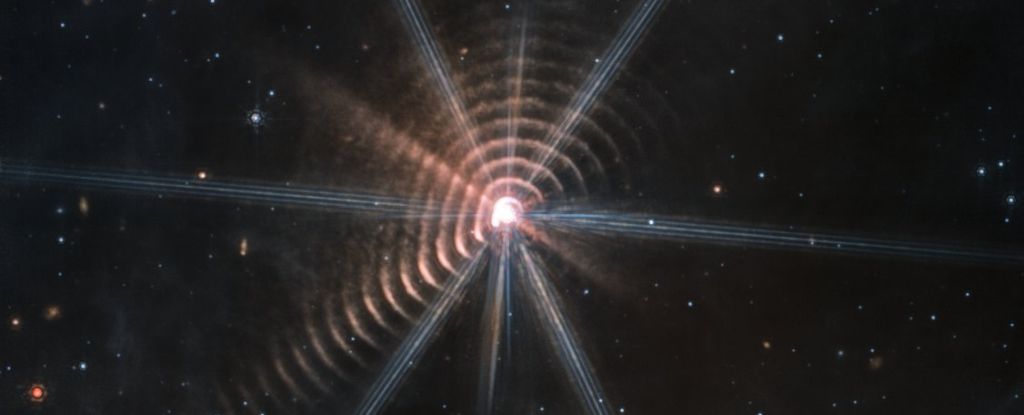
Click the link below the picture
.
The Universe, truly, is full of wonders, and the James Webb Space Telescope has just given us our best views of one of them yet.
The object in question is a star around 5,600 light-years away, and Webb’s infrared eye has picked out an extraordinary detail: it’s surrounded by what appear to be concentric rings of light radiating outward.
While Webb’s characteristic diffraction spikes are not ‘real’, those concentric rings are – and there’s a wonderful and fascinating explanation for them.
The star is actually a binary pair of rare stars in the constellation of Cygnus, and their interactions produce precise periodic eruptions of dust that are expanding out in shells into the space around the pair over time.
These shells of dust are glowing in infrared, which has allowed an instrument as sensitive as Webb’s MIRI to resolve them in exquisite detail.
.
 James Webb Space Telescope’s new image of the spectacular nebula around WR 140. (JWST/MIRI/Judy Schmidt)
James Webb Space Telescope’s new image of the spectacular nebula around WR 140. (JWST/MIRI/Judy Schmidt)
.
.
Click the link below for the article:
.
__________________________________________
Leave a comment